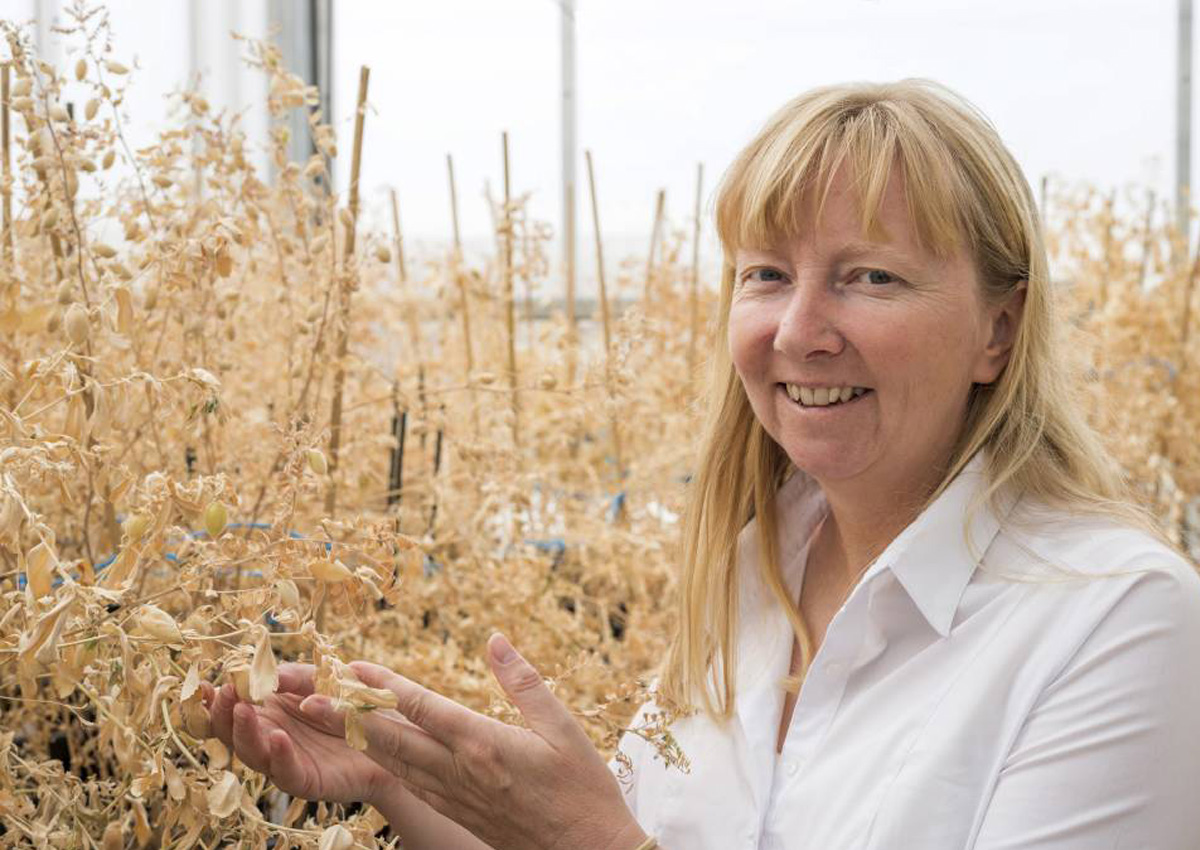
Technology to Accelerate Search for Drought Tolerant Chickpeas
January 8, 2020| |
According to Dr. Bramley, the traditional approach involves inserting aluminium access tubes into the soil to measure soil water content using a neutron probe. However, Dr. Bramley says, this method is time-consuming and labor-intensive. When Dr. Bramley saw University of Sydney Professor of Digital Agriculture and Soil Science Alex McBratney's presentation on various technologies for measuring the soil properties, including electromagnetic induction (EMI), she thought to adapt the technology measure soil water use in chickpea plots. The team used an EM38-MK1 sensor, a one-meter-long instrument that can collect electrical conductivity (ECa) data. A model, calibrated against neutron probe measurements, was also developed to calculate available soil water for different depths within the soil. By the end of 2017, a proof-of-concept experiment was established using 36 different chickpea genotypes. Some were rainfed while others were irrigated because of dry seasonal conditions. "Using the EM38 sensor, we were able to calculate water use for the plants in every plot as well as at different soil depths after a rainfall event," Dr. Bramley said.
For more details, read the news release on the Grains Research and Development Corporation website.
| |
You might also like:
- Global Team Sequences 429 Chickpea Lines from 45 Countries to Develop High-Yielding, Climate Resilient Crop
- India Develops Drought Tolerant and Disease Resistant Chickpeas
- Australian OGTR Approves GM Chickpea Field Trial
Biotech Updates is a weekly newsletter of ISAAA, a not-for-profit organization. It is distributed for free to over 22,000 subscribers worldwide to inform them about the key developments in biosciences, especially in biotechnology. Your support will help us in our mission to feed the world with knowledge. You can help by donating as little as $10.
-
See more articles:
-
News from Around the World
- Vitamin A-Enriched Rice Approval in PH Gets Support from Golden Rice Humanitarian Board
- Technology to Accelerate Search for Drought Tolerant Chickpeas
- PH Solon Lauds Approval of Golden Rice, Endorses Passage of Nat'l Biotech Law
- Punjab Seed Council Approves New Bt Cotton Variety
- China Announces Plan to Issue Biosafety Certificates for GM Soybean and Corn
- South Australia Lifts Ban on GM Crops
- PH President Confers Order of National Scientist to Biotech Champ
-
Research Highlights
- Protein in Tomato Explains Long-standing Plant Immunity Mystery
- HKU Plant Scientists Identify Strategy to Enhance Rice Grain Yield
- GM Poplar Field Trials Result to Sustainable Biomass Production Without Isoprene Emission
-
Plant
- OsABA8ox2 Suppresses Root Elongation and Contributes to Drought Response in Rice
- Functional FLN2 Vital in Salinity Tolerance of Rice
-
Read the latest: - Biotech Updates (November 12, 2025)
- Gene Editing Supplement (October 29, 2025)
- Gene Drive Supplement (February 22, 2023)
-
Subscribe to BU: - Share
- Tweet

